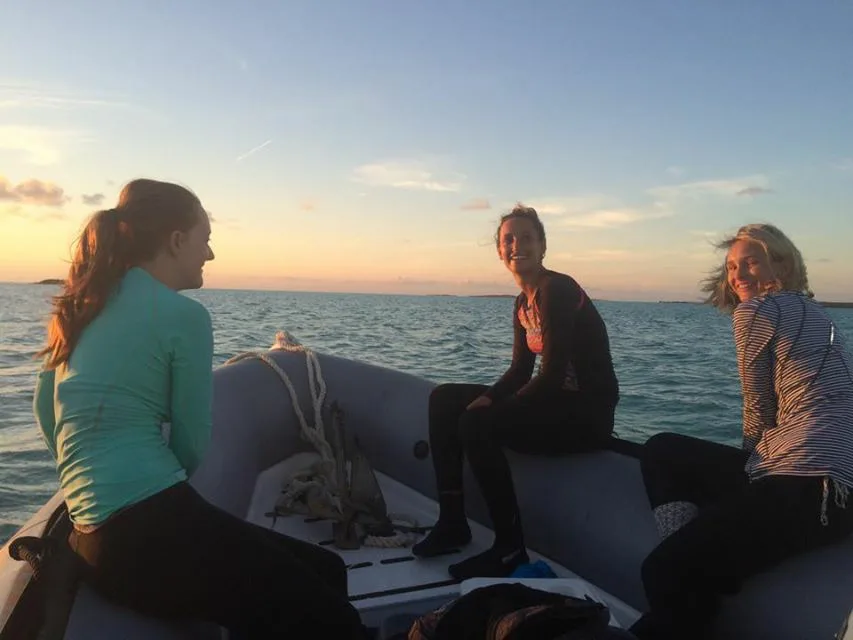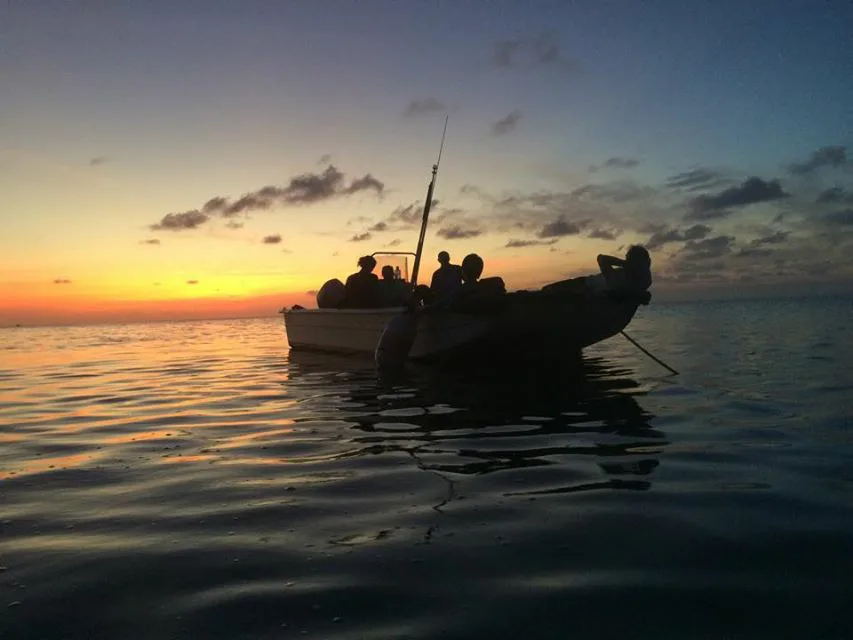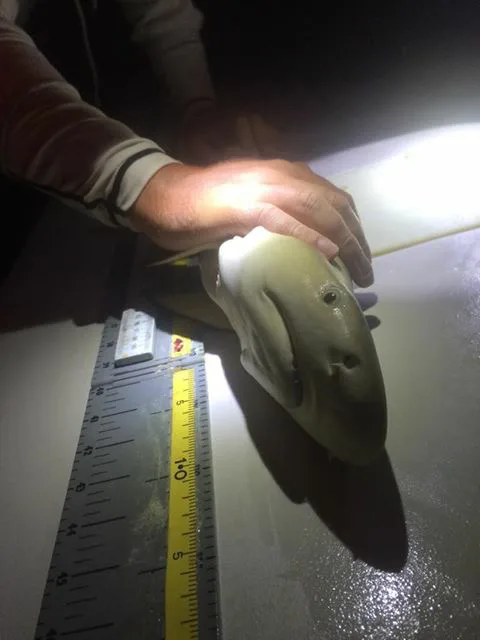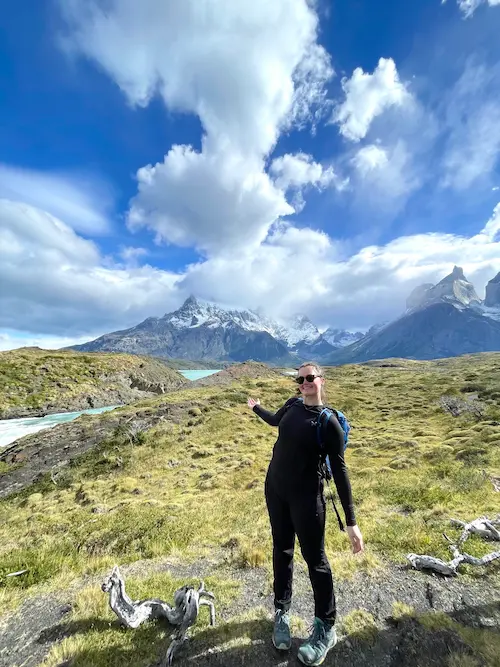“Shark!”
The beach was like a reflection of the sky. As we stepped on the firm white sand, the bioluminescence would flare up in a scatter of blue and white sparks in the wash of the tide. We were night sharking. On each night of research we’d drive out to the mangroves in the nature reserve and set out our 100 meter net to the brilliant light of the setting sun.
I was part of a ten person team—eight students, two SFS staff—focusing on juvenile lemon sharks within the Bell Sound Nature Reserve in South Caicos. During my time on the lemon shark project I learned new field skills, and gained experience working as a part of a team, following orders, and to be flexible in any given situation.

I’ve always wanted to work with animals; and using the nets was the first step in my career as a field biologist in learning how to trap and handle animals. We’d sit on the rocky shore, or perch on the wet deck of our boat and listen for the sound of a splash. Even without the telltale sound, in turns, one of us would wade out into the water to check for the presence of a shark with its slim, white-bellied body caught in the net. A captured shark would mean calling for help from SFS staff, anything else was our domain. I learned to be quick with my fingers to get sharp-finned fish and pinching crabs out of the net, letting them free so that they could swim off into the night.
We loved that net as much as we despised it. In the hot afternoons we’d sweat over its salty length. We’d been taught how to fix tears in the the diamonds of fishing line, and for the rest of the semester it was our responsibility to make sure that our net was sound enough to catch any shark that tried to swim through it.
On that night, four of us sat in a half circle on the shore, our faces lit by moonlight and the red glow of our headlamps. The night was eerie, twigs cracking in the dense brush around our temporary field station, and the scream-like braying of a feral donkey had given us chills. Strange shapes moved around us, though our lights transformed them into harmless things like a night heron sidling past us as it scavenged the shore. We learned to be patient on those long nights, filling the time with quiet jokes and stories, or staring upwards and trying to name all of the constellations and planets spanning the blue-black sky.

My clothes were still wet from where I’d been up to my neck in water laying out the net hours before, and soon it would be my turn to check the net. The waters were as warm as sunshine as I waded in, and I spared a moment to be glad for the solid bottom lying inches belong the soft sediment at my feet. At some sites, the submerged ground was soft and littered with treacherous holes that you couldn’t see in the night. Even with the rocky bottom, I knew that before the night was through, sand and soft clay would have worked itself into the zippers of the black rubber booties I wore in the water.
The sounds from shore—the soft conversation of my peers and the chirp of insects—faded as I ventured further into the lagoon. When I was deep in the waters, almost to the rebar that held our net in place, I heard a mighty splash come from closer to shore. I cast my light back over the water, but the net looked untouched, a beam of light answered me from shore: my sharking peers were as curious as me.
There was nothing trapped in the deeper waters, so I started my steady tread back to shore. I wasn’t sure what I’d find in the net. Usually, a bigger shark can force its way through the net, leaving us a large hole to mend during the day. The water was cloudy with silt as I walked back, and in the bright light of my underwater flashlight, the net appeared to vanish and reappear with each step.
There! The black bulbs of the float line suddenly sank from the surface. I shined my light across them, then let the beam sink into the water. I saw nothing but the beige color of the lagoon’s sediment. I heard a call from the shore, my peers had seen my light stop moving, they wanted to know what I’d found.
I slipped the light onto my upper arm, then gripping the floats, carefully I raised the net up. As I pulled, the shape of a large shark rose to meet me. It’s mouth was open, showing off its teeth to me even as it was immobilized by the net. Its black, prehistoric eyes focused on me, and I quickly lowered the thing back into the water.
“Shark!” I called back to shore, then stood waiting for our intern, Travis, to come meet me.

For each shark we returned to shore our team would be ready to take its weight, length, and insert a PIT (Passive Integrated Transponder) tag, adding to the database of information on sharks in the area. We were creating a baseline of data. The Bell Sound area, South Caicos, is proving to be an important lemon shark nursery. Data we collected at CMRS is important as the TCI move toward implementing shark conservation regulations. At the semester’s end our data would go into writing reports and giving our research presentations, but it was the experience of standing soaking wet and exhilarated in the field, that has sunk itself into my memory. I’ve done field research with animals before and after those months abroad, but nothing can compare to working with the juveniles of a species of predator that evolved in Earth’s seas 100 million years ago.
Related Posts


